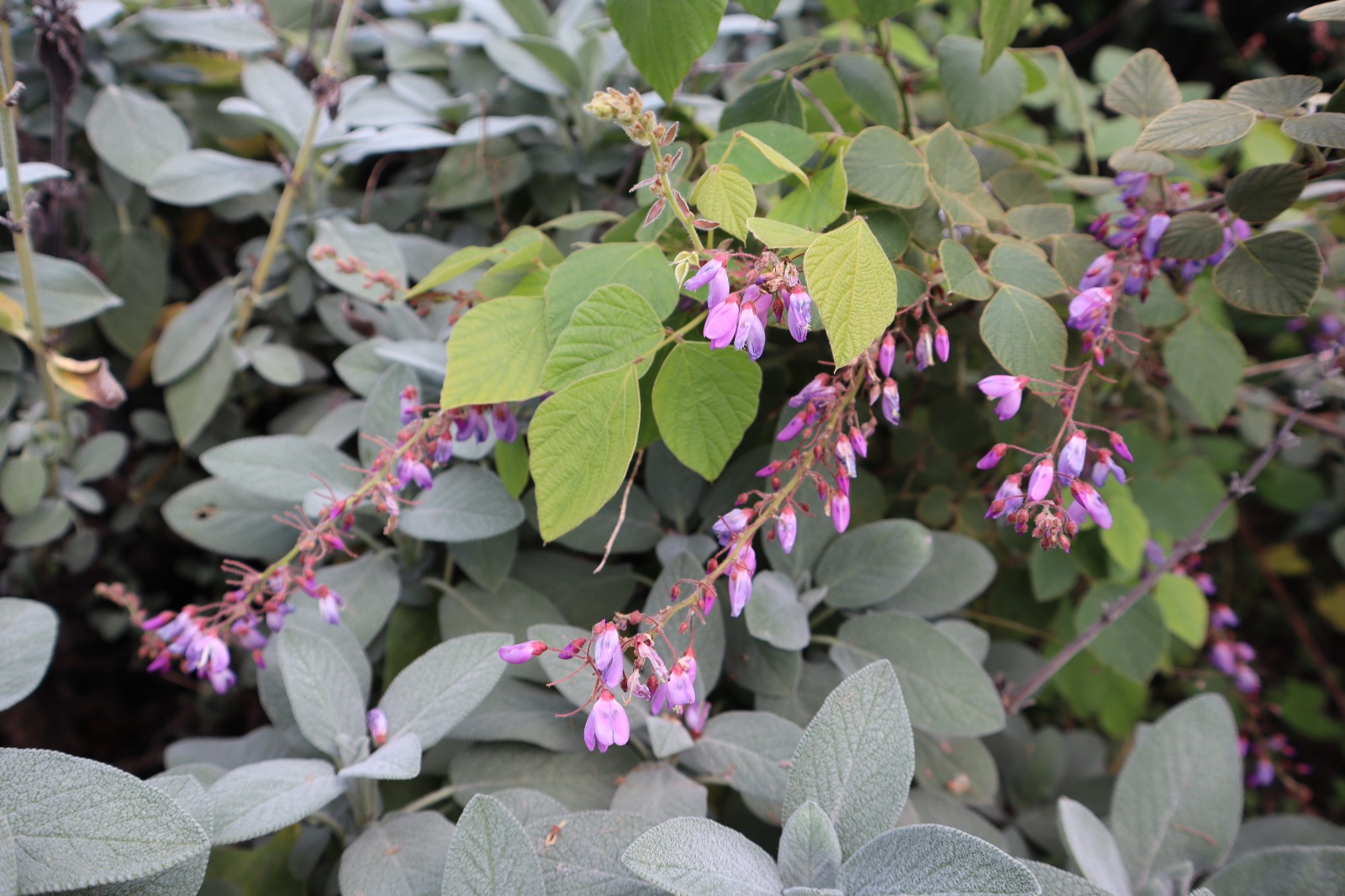Desmodium tiliifolium
Credits
Article from Bean's Trees and Shrubs Hardy in the British Isles
Recommended citation
'Desmodium tiliifolium' from the website Trees and Shrubs Online (treesandshrubsonline.
Genus
Synonyms
- Hedysarum tiliifolium D. Don
A semi-woody plant, which sends up annually from a woody root-stock a number of erect stems 2 to 4 ft high, more or less downy. Leaves trifoliolate, with a main-stalk 2 to 3 in. long. Leaflets nearly glabrous on both sides, or very downy beneath, the end one larger than the others, broadly obovate, 2 to 4 in. long, 11⁄2 to 3 in. wide; the side leaflets half to two-thirds as large, and broadly ovate. Panicles terminal, 8 to 12 in. high, the lower sections borne in the uppermost leaf-axils. Flowers 1⁄2 in. long, varying from pale lilac to dark pink, borne on a slender stalk not quite so long as itself; calyx 1⁄10 in. wide, hairy, with broad shallow teeth. Pod 2 to 3 in. long, 1⁄6 in. wide; six- to nine-jointed, with the scalloping on the upper side characteristic of the genus.
Native of the Himalaya at 9,000 ft; the specimens now at Kew were raised from seed obtained from Kashmir in 1879. It flowers from August to October, but needs a hot summer to bring out its best qualities. In cold, wet seasons the flowers do not open at all. Propagated by division of the root-stock in spring. The late Sir Henry Collett called this a ‘protean plant’; the form in cultivation is one whose leaves are not very downy.

